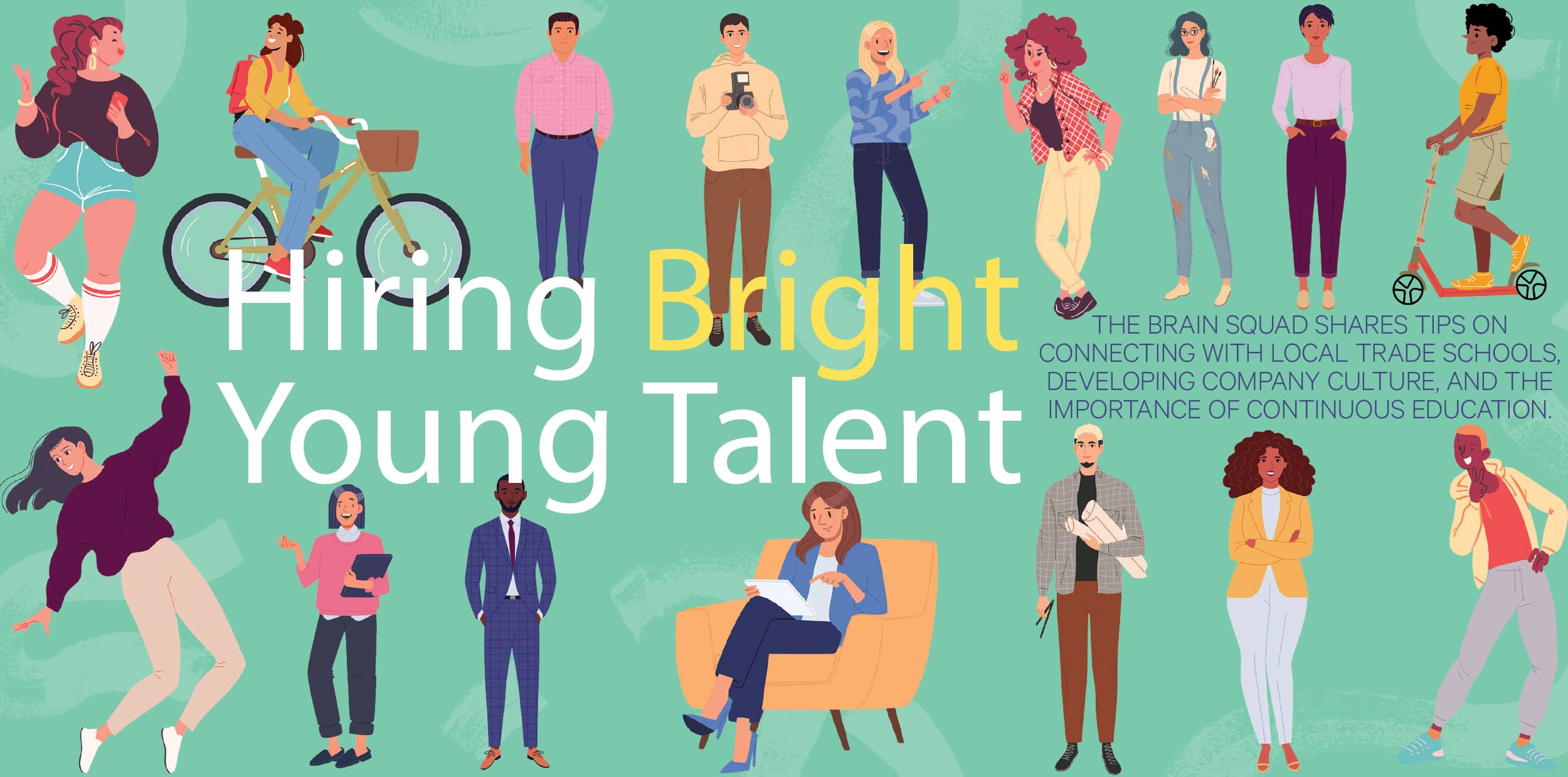This article originally appeared at our sister publication, Big Picture.
THE LABOR MARKET has changed drastically since the COVID-19 pandemic. There are 1.97 million fewer Americans working today compared to February of 2020, according to the US Chamber of Commerce. Factors contributing to the labor shortage include an increase in savings, early retirements, lack of access to high-quality, affordable childcare, and newfound entrepreneurship.
You may also notice some of your employees and vendors are on the cusp of retirement. For instance, the average age for a wallcovering installer is 51 years old, says Clark Johnson of Finishing Chicago.
According to Claudia St. John of Affinity HR Group, “Everyone who wants a job has a job. The unemployment rate is at a record low – 3.4 percent – and it’s not expected to change any time soon. You have to go and find new hires.” But with 9.9 million job openings in the US and 5.8 million unemployed workers, this is easier said than done.
We asked the Brain Squad: “What are your tips for attracting bright young talent to your business?”

NETWORKING
- We’re trying to work with the tech schools. Our work is hands-on, so those types of people make sense. — Rick Mandel, Mandel Graphic Solutions
- We attend job fairs at universities. — Morgen Masciana, DCG One
-
Make connections at some good, local trade schools and community colleges that have printing programs. The ideal candidate will be bright and excited to learn and move ahead with their skills. I look for a person with enthusiasm and dedication to the field. — Jim Dittmer, JDA Creative Color
DIVERSITY
- We have a learning program exposing qualified candidates to the entire scope of operations in the business. The candidates must be college graduates with a strong GPA and new to the industry. After learning and exposure to all departments, and if the candidate embraced the 9-month program, they are offered a role. — Brian Hite, Image Options
- I suggest changing job descriptions to have more of a skills descriptor. We have had good luck with those who have worked in the food industry, especially in kitchen prep. Two of our newest team members have worked in the kitchen. They are good with their hands, clean and tidy, and have the capacity to understand timing and [the importance of] preparing their product. — Linda Fong, Fastsings Oakland; Fastsigns Hayward
- We tried [outside] services and spent money and found none. We created graphics for our [building] windows and found an individual with talent. He is amazing and has created a very attractive window display and has painted the walls, gates, and metal paneling in black outside. Now everything outside looks great. He is designing old windows now. — Tommy Melendez, Master Graphics NYC
CULTURE
-
One thing that hasn’t changed and never will is the fact that people want to know their employer cares about them. We must innovate and make sure the workforce knows we care about them. We have a game room in our building for break and lunch times, and they can win paid time in the game room based on how well they perform. In the breakroom, we have a massage chair, game consoles, hammock, and relaxing chairs. — Mark Potter, Kingdom Vinyls
- [Offer] great benefits, including additional time off based on performance and/or tenure. — Jon Sherman, Flavor Paper
-
People want to be part of a journey and be part of something special. It’s not just about money. — Derek Michalanney, Signageworld
- I’ve found most people, regardless of age, want the same things: a rewarding work environment, the opportunity to advance/grow, to have a sense of pride in what they do, and to be treated like a person – with some flexibility and an understanding that we are [all] different. I believe if you treat people well it helps attract bright talent regardless of age. — Brian Adam, Olympus Group
Read more of Brian’s thoughts on hiring and retention here.
-
[Offer] great pay and benefits, [be] team-oriented, and [provide] room for growth. — Tami Napolitano, Awesome Graphics

EDUCATION
- I’ve launched the WrapStar University training facility to scout for my future employees. I suggest offering internship and apprenticeship programs, too. — Kristin Lanzarone, WrapStar Pro
- Teach them new skills and teach them your way. They will acquire additional skills as they season on the job. — Pat Dacy, 3V Signs & Graphics
- We try to stress to the newer talent that wallcoverings are definitely not your old-fashioned wallpaper job. The capabilities we have these days with digital print and multi-surface media types and mixed media wallcovering projects are far beyond what traditional wallcovering offered. The types of jobs are much wilder and more expressive, and younger generations can appreciate them! — Derek Atchley, Atchley Graphics
INSTALLERS
- Installers are among the most challenging employees to find. It is very difficult to find a seasoned installer in this environment. We are finding that the best approach is to train potential installers from the ground up. We utilize an apprentice program that allows a lower paid apprentice the ability to gain the skill set by teaming up with a higher paid, seasoned installer. We have found this a great way to develop the skills necessary to be successful in this trade while providing an opportunity for someone to learn the ins and outs of graphic installation. — Gary Schellerer, ER2 Image Group
-
We are definitely having trouble finding experienced installers. We try to have a diverse group of outside installers, [and we] hire to train by pairing up a junior person with a more experienced installer until they learn the ropes. — Wade Neff, Strategic Factory
- Most of our installers are well under [51 years old] and are trained by seasoned, more mature managers. — Brian Hite, Image Options
- Traditional wallpaper hangers are so hard to come by… we wish we knew the answer. Unfortunately, we don’t have a need for this work full time. I wish we could send our vinyl crews to a training session to learn some tricks of the trade. — Rob Matthews, M3
What’s the Brain Squad?
If you’re the owner or top manager of a signage and graphics company in the US or Canada, you’re invited to join the Signs of the Times Brain Squad. By taking one five-minute survey each month, you will receive access to some of the industry’s freshest data on sales — including your fellow members’ comments on what’s selling and what isn’t — and can make your voice heard on key issues affecting the sign industry. Sound good? Sign up here.
Advertisement


 Tip Sheet2 weeks ago
Tip Sheet2 weeks ago
 Photo Gallery4 days ago
Photo Gallery4 days ago
 Ask Signs of the Times6 days ago
Ask Signs of the Times6 days ago
 Real Deal2 weeks ago
Real Deal2 weeks ago
 Paula Fargo1 day ago
Paula Fargo1 day ago
 Benchmarks1 week ago
Benchmarks1 week ago
 Photo Gallery1 day ago
Photo Gallery1 day ago
 Women in Signs2 weeks ago
Women in Signs2 weeks ago














